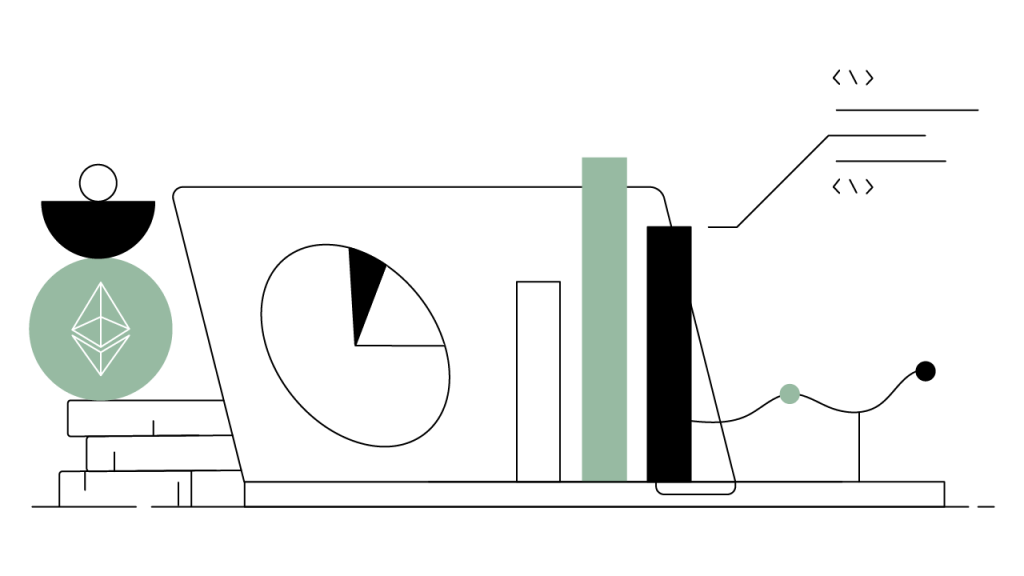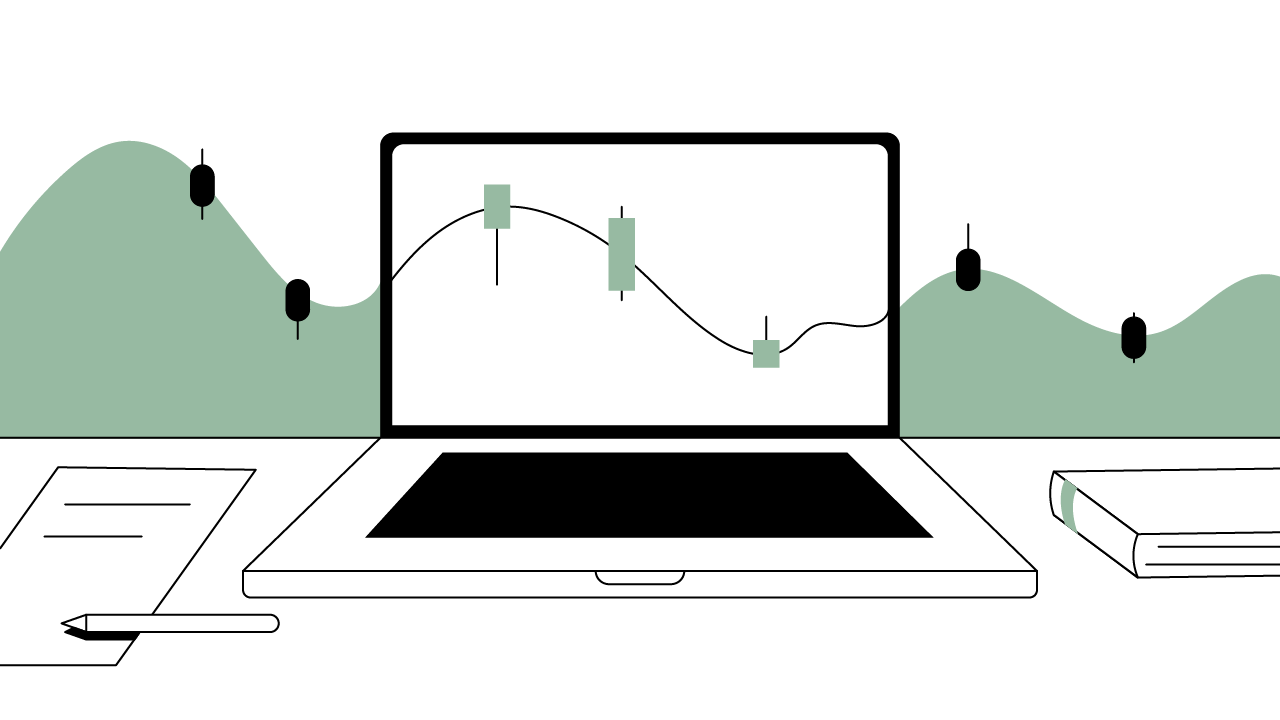Contents
What Is a Candlestick Chart?
How To Analyze a Candlestick Chart
How To Interpret Candlestick Wicks for Better Trading Decisions
What Are the Components of a Single Candlestick?
What Are Common Single Candlesticks?
What Is a Candlestick Pattern?
What Is the 3 Candle Rule?
What Are Common Candlestick Patterns?
What Is the Best Way To Learn Candlestick Patterns?
Master Candlestick Patterns With Gemini
How To Read Candlestick Charts and Understand Trading Patterns
Learn how to read candlestick charts, analyze trading patterns, and master market trends. Explore strategies and tools for better trading decisions.
Updated January 22, 2025 • 6 min read

Summary
In the fast-paced world of trading, data is king — but numbers alone can feel overwhelming without a clear way to interpret them. Candlestick charts are a powerful visual tool that provides traders an intuitive way to understand price movements and market trends. Learning to read these charts will give you insights into market sentiment, help you identify trading opportunities, and refine your trading strategy.
In this guide, we’ll break down the basics of candlestick patterns, their components, and how to use them effectively in your analysis. Whether you’re new to trading or seeking to sharpen your skills, this resource will prepare you to make informed decisions in the financial markets.
What Is a Candlestick Chart?
A candlestick chart is a visual representation of price activity within a specific timeframe, offering a snapshot of the asset’s price action. Originating from Japanese candlestick traders in the 1700s, this charting method remains a cornerstone of modern technical analysis.
Unlock the future of money on Gemini
Start your crypto journey in minutes on the trusted crypto-native finance platform
What Are the Key Features of a Candlestick Chart?
Candlestick charts have a few main features that make them particularly useful:
Time-Based Segments: Each candlestick represents price data for a specific time period — this could range from minutes (for day trading) to months (for long-term investing).
Four Data Points: Each candlestick shows the opening price, closing price, highest price, and lowest price for that period.
Visual Cues: The candlestick’s “body” and “shadows” (or wicks) visually indicate the balance between buying pressure and selling pressure during that period.
Compared to line charts or bar charts, candlestick charts provide richer information. They show price changes and reflect market sentiment, helping traders predict trends, reversals, and periods of consolidation.
How To Analyze a Candlestick Chart
Once you understand the basics of candlestick anatomy — open price, close price, high price, and low price — it's time to interpret these charts for trading decisions. The true power of candlestick charts lies in recognizing patterns and market sentiment to predict future price movements.
Identify Trends
Look for sequences of candlesticks that show uptrends, downward trends, or sideways movement. For example, green candles suggest a bullish trend, while red candles indicate bearish momentum.
Spot Key Patterns
Learn to identify common patterns like engulfing candles, doji, or hammer candlesticks. These patterns often signal potential reversals or trend continuations in the market.
Read Candle Movement
Focus on the candle's body and wicks. Large bodies show strong market momentum, while short bodies indicate indecision or weak momentum. Long wicks indicate volatility, while short wicks indicate stability during the session.
Combine Candlestick With Indicators
Use candlestick charts alongside technical tools like Bollinger Bands, RSI, or moving averages for better predictions. For example, a bullish engulfing pattern paired with RSI exiting oversold territory strengthens a buy signal.
Evaluate Shadows (Wicks)
Long shadows reveal price volatility. Long upper shadows may indicate selling pressure or rejection near a resistance, while long lower shadows suggest strong buying near the support level.
Consider Volume
Volume confirms the strength of a pattern. A candlestick with a high trading volume is more reliable than one with a low volume.
Focus on one pattern at a time and practice reading real charts using demo trading platforms. Over time, you’ll recognize these patterns instinctively. By combining these elements, traders can gauge market sentiment and identify potential opportunities.
How To Interpret Candlestick Wicks for Better Trading Decisions
Candlestick wicks, also known as shadows, play a crucial role in understanding market sentiment. These wicks indicate the highest and lowest prices reached during a trading period, offering insights into the battle between buyers and sellers.
Long Upper Wicks
Long upper wicks signify that buyers initially drove the price higher but sellers regained control, pushing it lower before the period closed. They’re often observed during resistance levels, suggesting potential reversals or selling pressure.
Long Lower Wicks
Long lower wicks ndicate strong buying activity where prices dipped but recovered before the period ended. They’re typically seen near support levels, hinting at potential upward momentum.
Short Wicks
Short wicks represent price stability with minimal volatility during the period.
Using Wicks for Trading Decisions
Combine wick analysis with other indicators like volume or moving averages to confirm trends.
For example, a long lower wick near a key support level combined with high volume may signal a buying opportunity.
What Are the Components of a Single Candlestick?
Breaking down each component of a candlestick offers deeper insights into price action and potential future movements.
Open Price
The opening price sets the baseline for the session. If the subsequent price action consistently moves upward, it indicates strong buying pressure.
Close Price
The closing price is a critical data point as it reflects the final consensus of traders for that session. Comparing the close price to the open price determines whether the session was bullish or bearish.
High Price
The highest price is marked at the top of the upper wick. This indicates the strongest price point achieved, often revealing resistance levels.
Low Price
The lowest price, shown at the bottom of the lower wick, indicates support levels, where buyers stepped in to push prices back up.
Green Candles vs. Red Candles
A green candle reflects optimism or strong demand, often signaling an uptrend.
A red candle suggests pessimism or increased supply, leading to a downtrend.
By analyzing the body of the candle, traders can identify the intensity of the market’s movements.
What Are Common Single Candlesticks?
There are a few single candlesticks that are particularly common, making them useful for you to be familiar with:
Long Upper Shadows
These candles indicate that sellers regained control after the price peaked, suggesting possible selling pressure or a looming reversal.
Long Lower Shadows
These candles highlight strong buying pressure, where the price dipped but quickly recovered, signaling potential upward momentum.
Doji Candlesticks
A doji candle forms when the opening price and closing price are nearly identical, reflecting market indecisions. Depending on the context, this can signal a potential reversal or continuation.
Umbrellas
Umbrella-shaped candles, such as the hammer candlestick and hanging man, are notable for their long shadows and small bodies. These often signal reversal points, with hammer candlesticks suggesting bullish reversals and hanging man patterns hinting at bearish ones.
What Is a Candlestick Pattern?
While single candlesticks provide useful information, candlestick patterns offer a more comprehensive view. Patterns are formed by analyzing multiple candles over time, helping traders predict future price movements:
Reversal Patterns: Indicate a potential change in the current trend (e.g., from bullish to bearish).
Continuation Patterns: Suggest that the current trend is likely to persist.
Understanding these chart patterns equips traders to make well-informed trading decisions.
What Is the 3 Candle Rule?
The 3 candle rule is a simple yet effective strategy for identifying trend reversals or conformations using a sequence of three candlesticks. It helps traders anticipate potential price movements based on recurring patterns.
Bullish 3 Candle Pattern
First Candle: A red (bearish) candle indicating a downtrend.
Second Candle: A small-bodied candle (e.g., doji) showing indecision in the market.
Third Candle: A green (bullish) candle closing above the first candle’s open price, signaling a reversal.
Bearish 3 Candle Pattern
First Candle: A green (bullish) candle indicating an uptrend.
Second Candle: A small-bodied candle reflecting market indecision.
Third Candle: A red (bearish) candle closing below the first candle’s open price, signaling a reversal.
Example:
Morning Star: A bullish 3-candle pattern appears at the bottom of a downtrend.
Evening Star: A bearish 3-candle pattern found at the top of an uptrend.
What Are Common Candlestick Patterns?
Familiarizing yourself with some of the most common candlestick patterns can make it easier for you to identify them. Here’s what to keep in mind.
Bullish Candlestick Patterns
The most common bullish candlestick patterns are:
Bullish Engulfing Patterns: A green bullish candle completely engulfs the prior red candle, signaling a reversal of bearish momentum.
Bullish Harami: A small green candle within the body of the previous red candle, reflecting a potential trend shift.
Bearish Candlestick Patterns
With bearish candlestick patterns, these are the main ones to keep in mind:
Bearish Engulfing Patterns: A red bearish candle overtakes the prior green candle, signaling increasing selling pressure.
Bearish Harami: A small red candle within a larger green one, indicating hesitation in the upward trend.
Reversal Patterns
Reversal patterns indicate potential shifts in market trends, either from bullish to bearish or vice versa.
Recognizing these patterns is crucial to identifying turning points in price action and planning strategic trades:
Morning Star: A bullish reversal pattern that follows a downtrend, consisting of three candles (a long red candle, a small-bodied candle, and a green candle).
Evening Star: The bearish counterpart to the Morning Star, signaling a potential downtown.
Shooting Star: A bearish reversal pattern featuring a long upper shadow and a small body near the lower end of the range.
Hanging Man: A bearish reversal signal often found at the top of an uptrend.
Hammer Candlestick Patterns: a bullish reversal pattern characterized by a small real body near the top of the candlestick, a long lower shadow (at least twice the size of the body), and little to no upper shadow. It typically appears after a downtrend and indicates strong buying momentum.
These patterns, when combined with other analytical tools, can provide a powerful framework for understanding market trends and potential trading opportunities.
What Is the Best Way To Learn Candlestick Patterns?
Mastering candlestick patterns takes time and practice. Here are some effective methods to help traders learn and apply these skills:
Focus on Key Patterns
Begin with foundational patterns like doji, hammer, and engulfing patterns. Study their characteristics, how they form, and what they signify in different market contexts.
Use Practice Accounts
Many platforms offer demo accounts where you can analyze candlesticks and test strategies in a risk-free environment.
Analyze Historical Charts
Review past price movements and identify patterns that led to successful trend reversals or continuations. The backtesting helps you recognize patterns more confidently in real-time trading.
Master Candlestick Patterns With Gemini
Understanding how to read candlestick charts is one of the most valuable skills that any trader can possess in any market.
While some tools are focused on interpreting details such as candlestick patterns, others help to use trading strategies to create new market sentiment.
Begin your trading journey today — try Gemini’s platform and advance your journey towards becoming a successful trader today. By doing so, you can easily tackle all the issues that surround the financial market especially when armed with the proper knowledge and resources.
To truly master candlestick charts, consistency is key. Gemini is an approachable platform for both beginners and experienced traders to explore these concepts in real time. Whether you’re analyzing BTC candlestick charts or studying reversal candlestick patterns, our resources and stacking and trading tools can help you make confident decisions.
Cryptopedia does not guarantee the reliability of the Site content and shall not be held liable for any errors, omissions, or inaccuracies. The opinions and views expressed in any Cryptopedia article are solely those of the author(s) and do not reflect the opinions of Gemini or its management. The information provided on the Site is for informational purposes only, and it does not constitute an endorsement of any of the products and services discussed or investment, financial, or trading advice. A qualified professional should be consulted prior to making financial decisions. Please visit our Cryptopedia Site Policy to learn more.

Is this article helpful?


